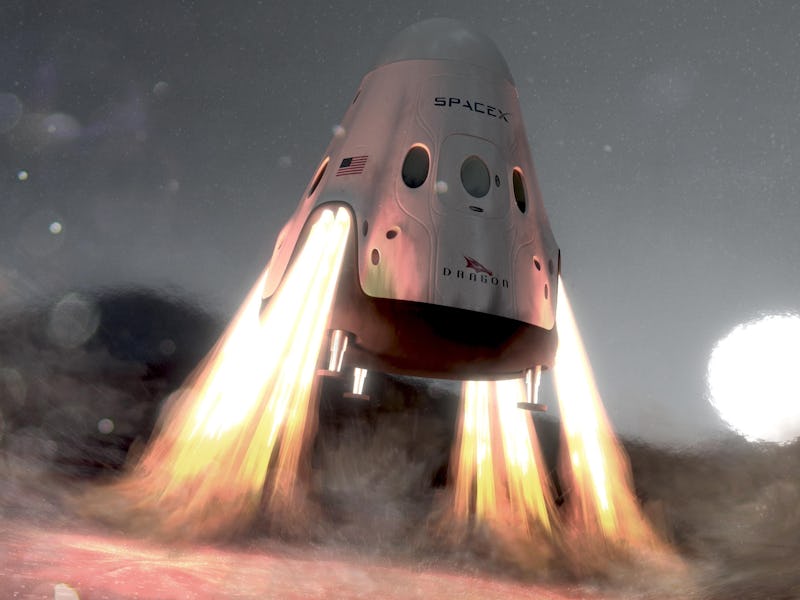
Remember how NASA has a ballsy plan to send a spacecraft out to an asteroid, pick up a boulder off the surface, and drop it off into lunar orbit, for reasons that aren’t easily explained? Well if you don’t, that may not be a problem for very much longer — because the incoming President Trump and his administration may end up scrapping that mission altogether.
With that in mind, some experts are pitching a substitute mission that would conscript SpaceX’s Red Dragon mission into bringing back red rocks from Mars.
Since its inception, the Asteroid Redirect Mission, or ARM, has been plagued by skepticism from all parts outside of NASA — particularly Congress, which authorizes the space agency’s massive $19.3 billion annual budget. With NASA already moving forward with another asteroid sample return mission, OSIRIS-REx, it was unclear exactly why ARM was necessary.
Those grumblings culminated in a late November letter from Congressman Lamar Smith (R-Tex), the chairman of the House Science Committee, to NASA Administrator Charles Bolden. The letter basically excoriated ARM as supported by “farcical studies,” and criticized the Obama administration as having foisted it upon NASA.
The Trump administration is already increasingly likely to cut some funding from NASA. While some of the criticisms of ARM are fair, there are several important goals behind the mission that will help further efforts to explore deep space and test out critical technologies and approaches to space travel — including understanding how to exploit asteroids commercially, how to develop infrastructure in cislunar space to make deep space missions possible, and a new solar electric propulsion mechanism that could make a journey to worlds like Mars more efficient and sustainable.
If ARM is getting canned, NASA will need another way to test out some of those new technologies and processes. Former astronaut and NASA Science Mission Directorate head John Grunsfeld is pitching one solution: use a solar electric propulsion-powered spacecraft to deliver a new communications satellite to Mars by 2022, as well as a new Red Planet imager and ground-penetrating radar in 2020 or 2022 to map out potential sources of water ice for science and human exploration.
In 2024, NASA could use another spacecraft, such as SpaceX’s Red Dragon, to deliver a small rover with the objective of capturing a sample of Martian rock and bringing it back to Earth for study.
It’s an insanely audacious plan, and it accomplishes a ton of different things: creates a high-bandwidth system of communications around Mars, creates a definitive map of water sources for future astronauts, tests out solar electric propulsion for future Mars-bound spacecraft (and proves the viability of such a mechanism for round-trip missions), and allows scientists to study the Martian rock here on Earth. In addition, it bolsters the work of a private spaceflight — something Trump and his team seem to be keen on pushing forward during the next four to eight years.
“A lot of people like this idea,” Grunsfeld told Ars Technica, while acknowledging it was just an idea for now.
But if ARM does get scrapped, perhaps this could be a more streamlined way to help NASA prepare for the inevitable crewed mission to Mars.